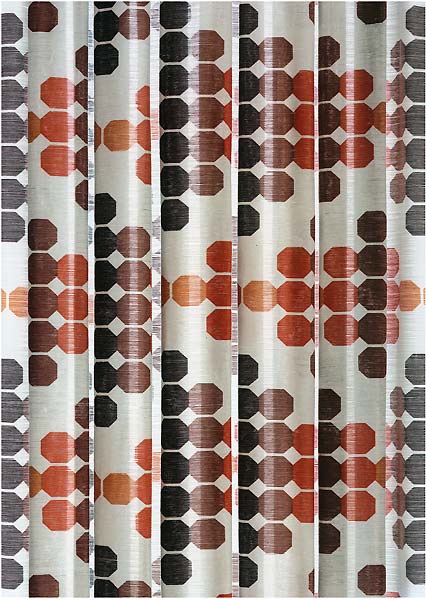
beautyme collections culture cuisine motor music search
 FRANK THIEL
FRANK THIEL
New Work
8 May - 20 June 2009
Sean Kelly Gallery, New York
www.skny.com
Curtains, folds and the political system of a society
German artist Frank Thiel presents new large-scale color photographs showing curtains made of fabrics arranged in folds at the Sean Kelly Gallery in New York. The photographer is addressing the recent history of Berlin.
The photographer, sculpturer Frank Thiel has collected curtains in abandoned East Berlin buildings, where they had remained for the last 15 years, becoming mute witnesses to the changes that happened in East Berlin and its political system. The curtains, removed from their original setting, were archived, steam-ironed and photographed in a studio. By hanging them in front of windows during daylight, Thiel recreated the atmosphere of the original sites.
Thiel describes the spaces that interest him "as the kind of beauty that a normal eye is often too blind to see and is usually abandoned from our perception."
The artist's real subject matter is the incomplete: he prefers the process of construction over the end result, and persistently pursues the aesthetics of temporality and change.
fig.: Untitled (c52), 2008; framed chromogenic print face mounted to Plexiglas; framed: 97 1/2 x 71 1/2 inches (247.7 x 181.6 cm). Edition of 5 with 2 APs signed and numbered, FT-C52. (C) Frank Thiel. Courtesy: Sean Kelly Gallery, New York.
On the photographs the curtains are enlarged to three times life size. The fabrics are arranged in folds. These folds on Frank Thiel's curtains seem to be 'paralysed' such as the society had been in the years before the "curtain has fallen".
Costume history
In costume history you can find folds in societies with very restrictive systems: such as during the times of fashion dominated by the Spainish court en.wikipedia.org/wiki/Habsburg_Spain (Renaissance). Examples for the extensive use of folds on the collar and at the end of sleeves (the decorative folds are imitating parts of the chemise which was worn under the corsage, skirt and manteau) are published on marquise.de/en/1500/pics/1599_1.shtml (Infanta Isabella Clara Eugenia), and even on the page (folds on the shoulders) marquise.de/en/1500/pics/1577_1.shtml (Unknown Lady).
In 1987 Dr. Manfred Wagner, Professor at the Department for Cultural and Intellectual History at the University of Applied Arts Vienna/Institute for Costume History, has written in the catalogue "Die Falte" (1987, details) about folds as a constitutivum of human clothes. The folds are an indicator for the change of society. Wagner found out that folds express the desire for orderliness, but have a practical function too: they make room to move. At the same time as the restrictive systems have ruled in Western Europe, the society was influenced by Macchiavelli's political concepts, the bible translation of Luther and his reformation of the Christian religion, expeditions, Gutenberg's letterpress...
About Frank Thiel
Frank Thiel was born in Kleinmachnow near Berlin, Germany in 1966. He moved to West-Berlin, Germany in 1985 and attended a training college for photography in Berlin from 1987-1989. For over ten years, Frank Thiel has been photographing Berlin. Thiel refers to it as "the city that suffers from an overdose of history…Yet it does not suffer from its sediments like other European cities, but from the consequences of its eruptions."
Frank Thiel has got recognition through several prizes such as the Award of the Ursula Blickle Foundation, Kraichtal, Germany (1994). The scultpurer, photographer has exhibited in museums and galleries worldwide; his works are included in the collections of major international museums such as Centro Galego de Arte Contemporánea, Santiago de Compostela, Spain; Museu National Centro de Arte Reina Sofia, Madrid, Spain; National Gallery of Canada, Ottawa, Canada; Fotomuseum Winterthur, Switzerland; and Moderna Museet, Stockholm, Sweden. Frank Thiel lives and works in Berlin.
more culture>>>